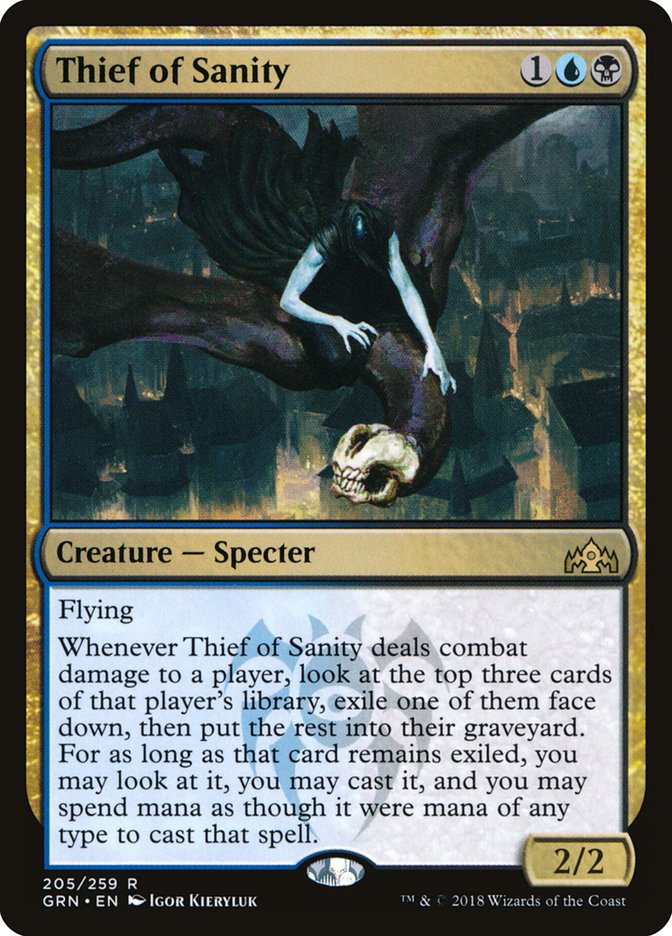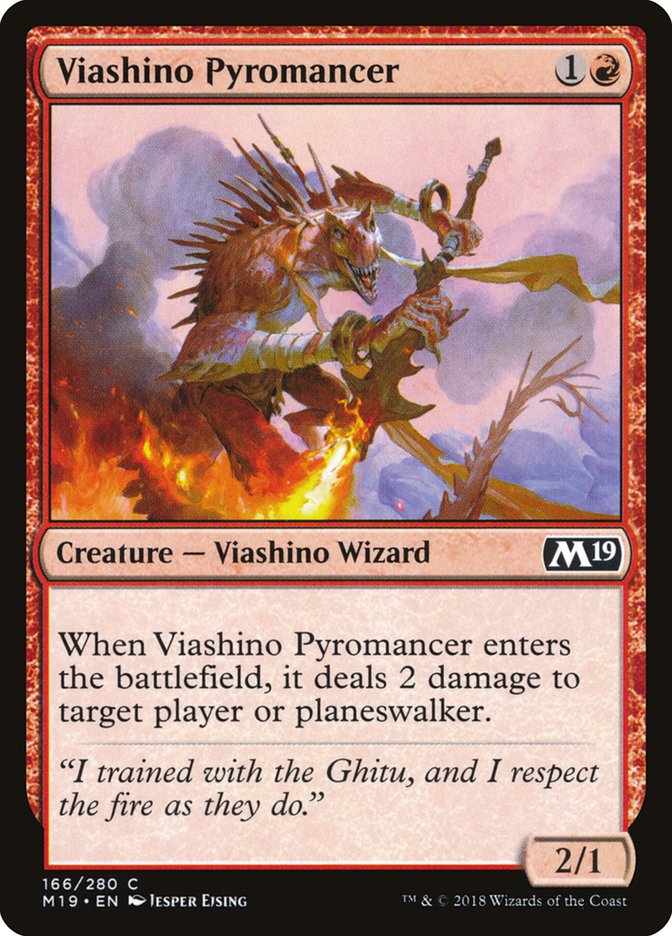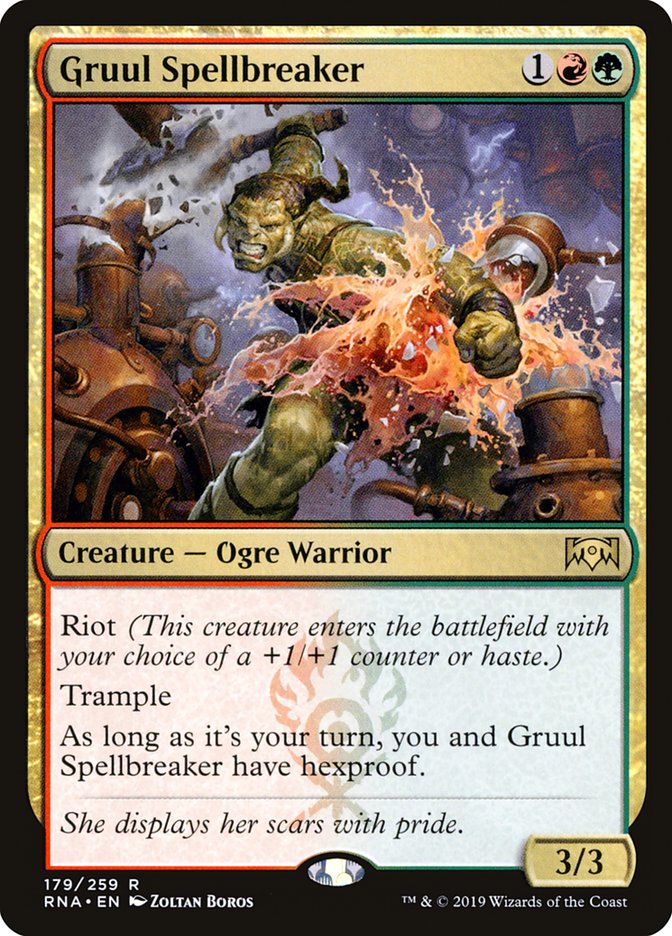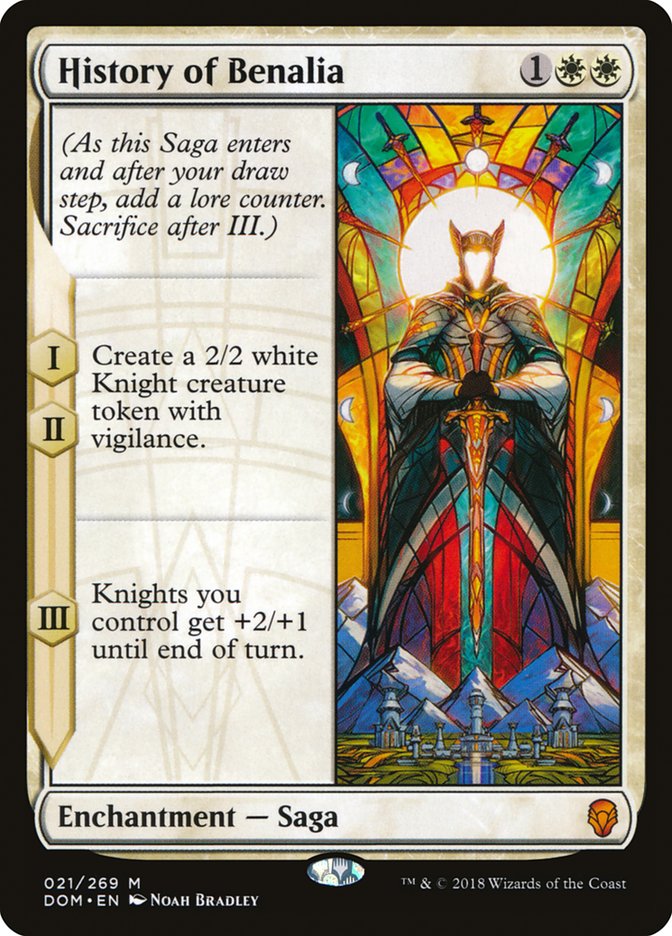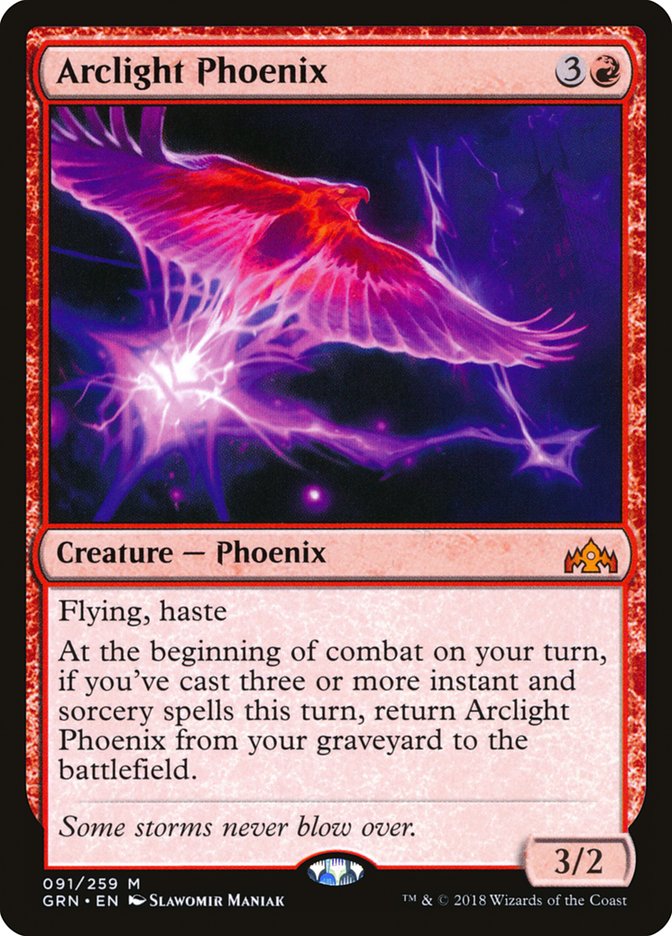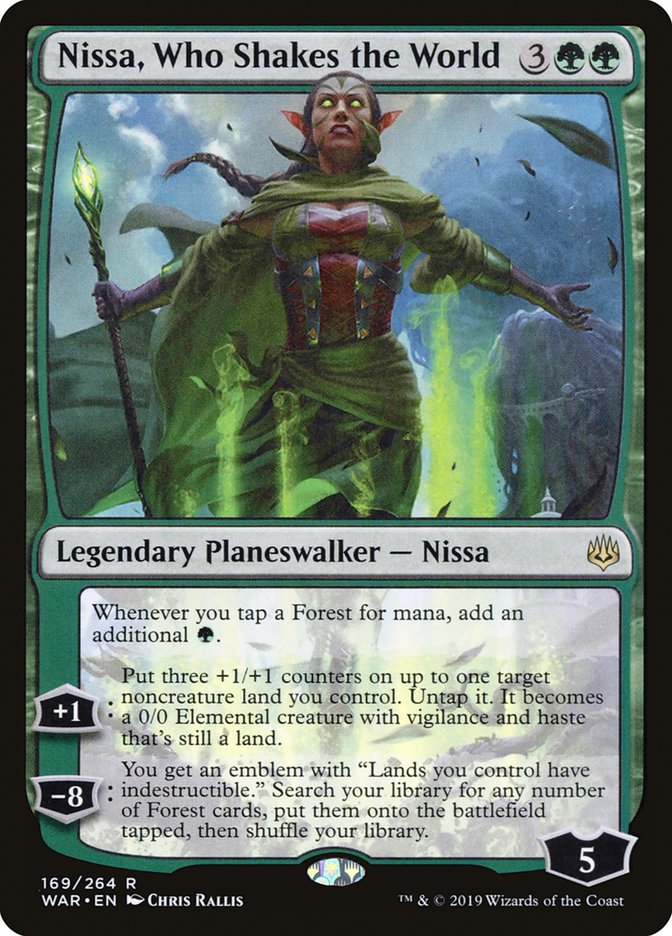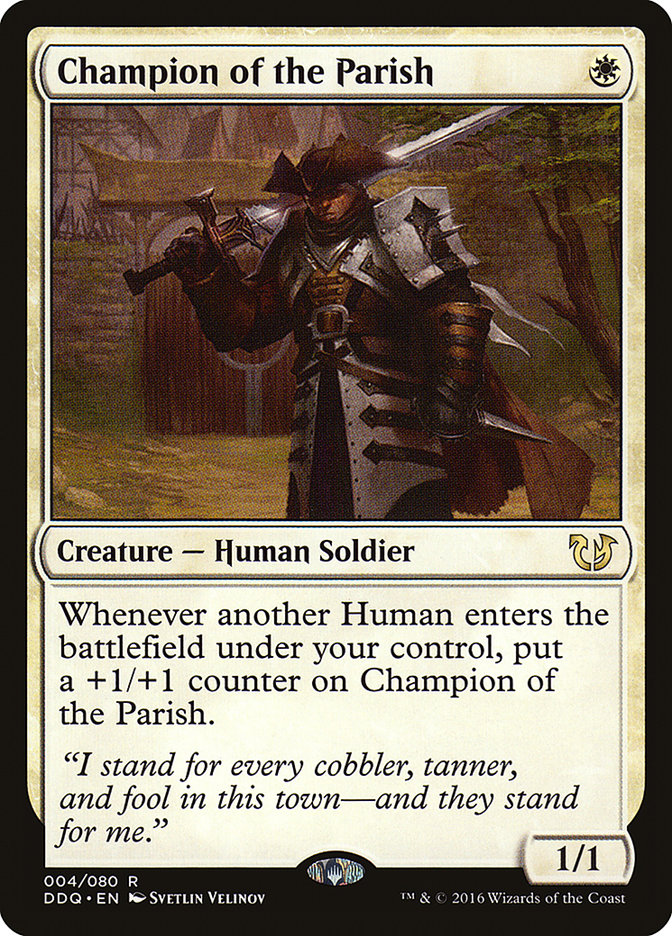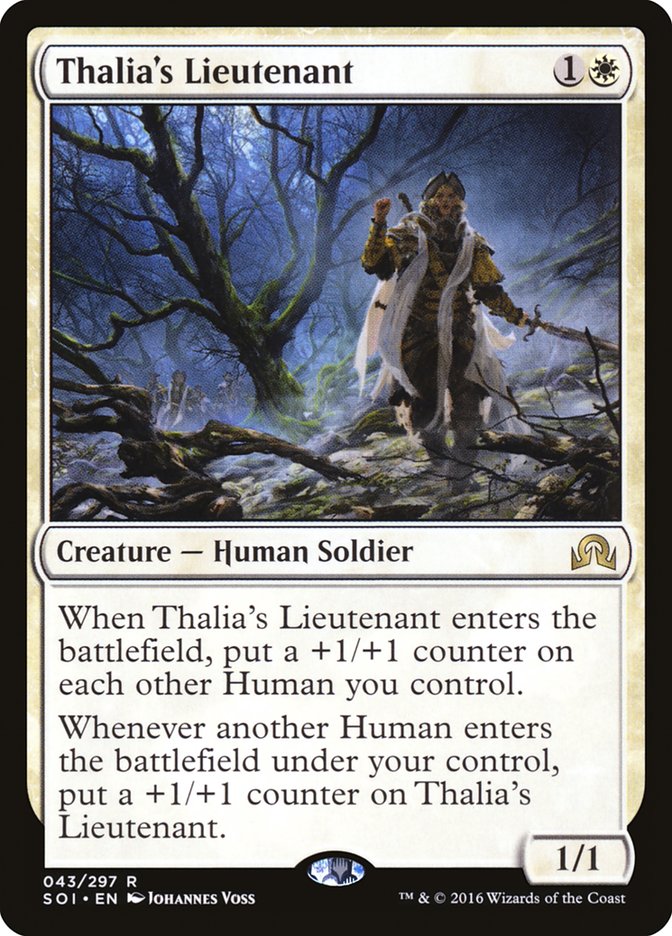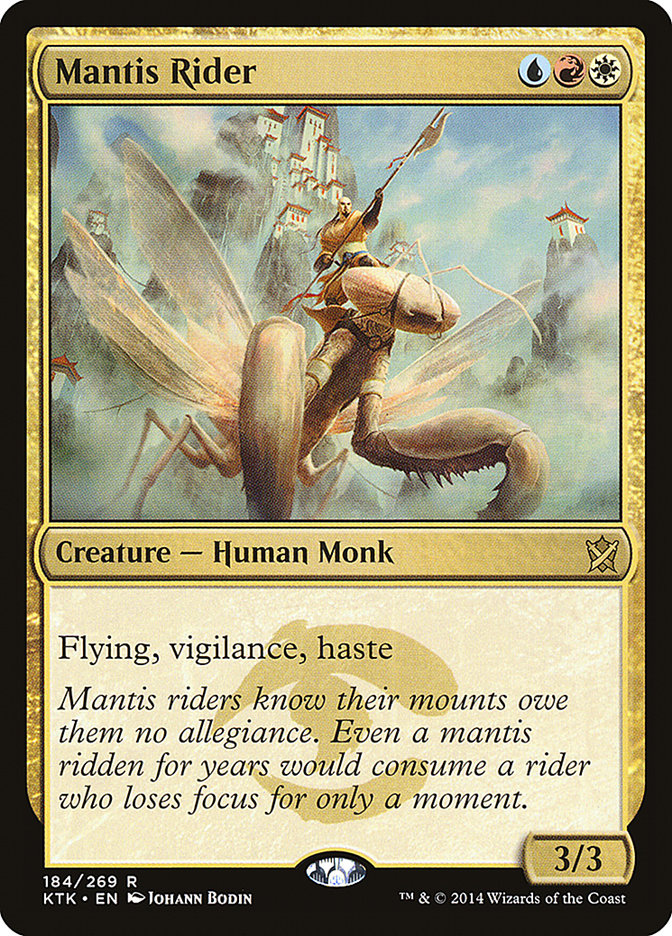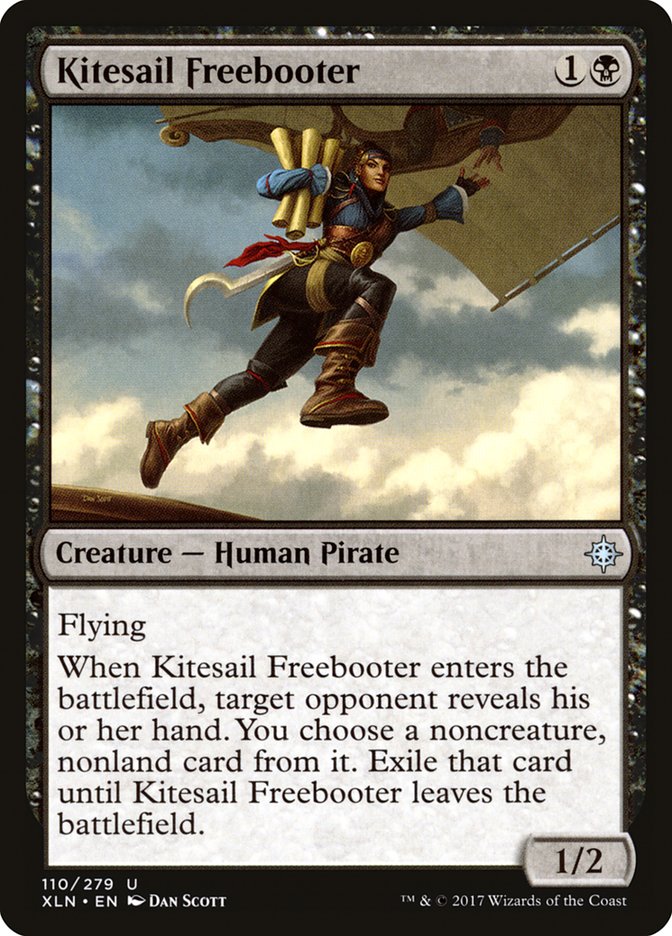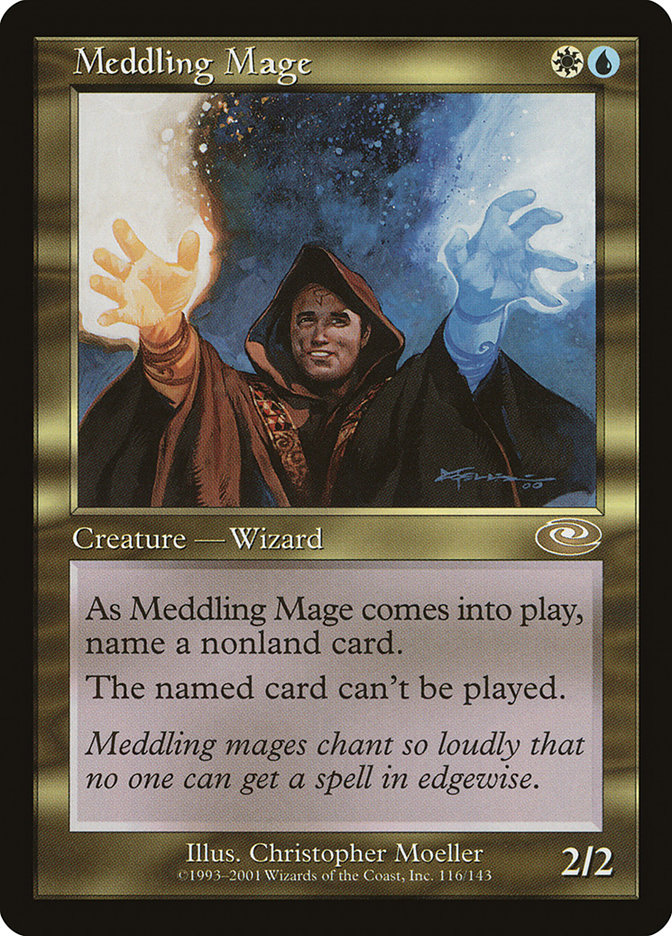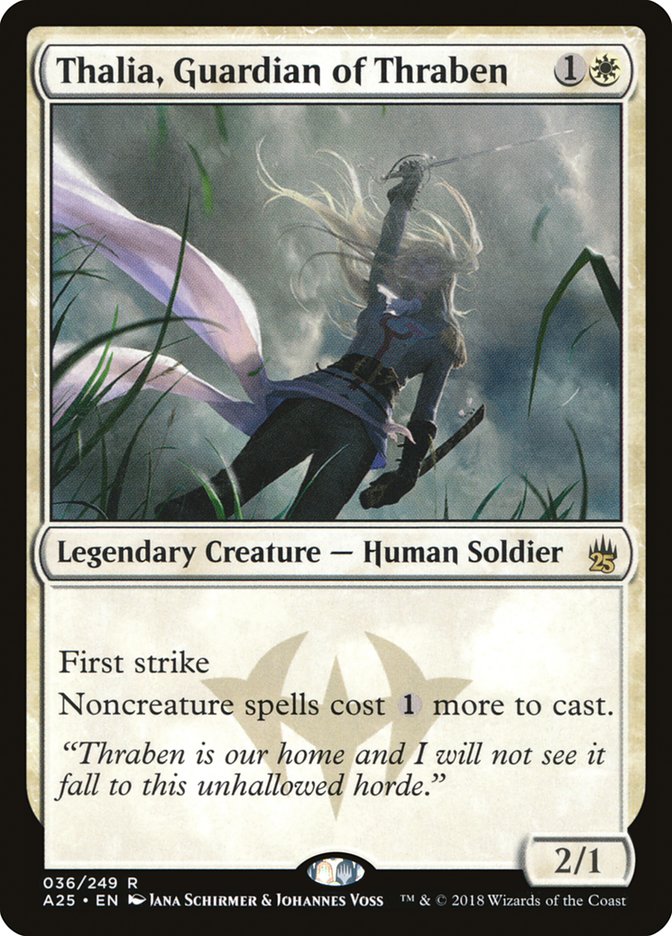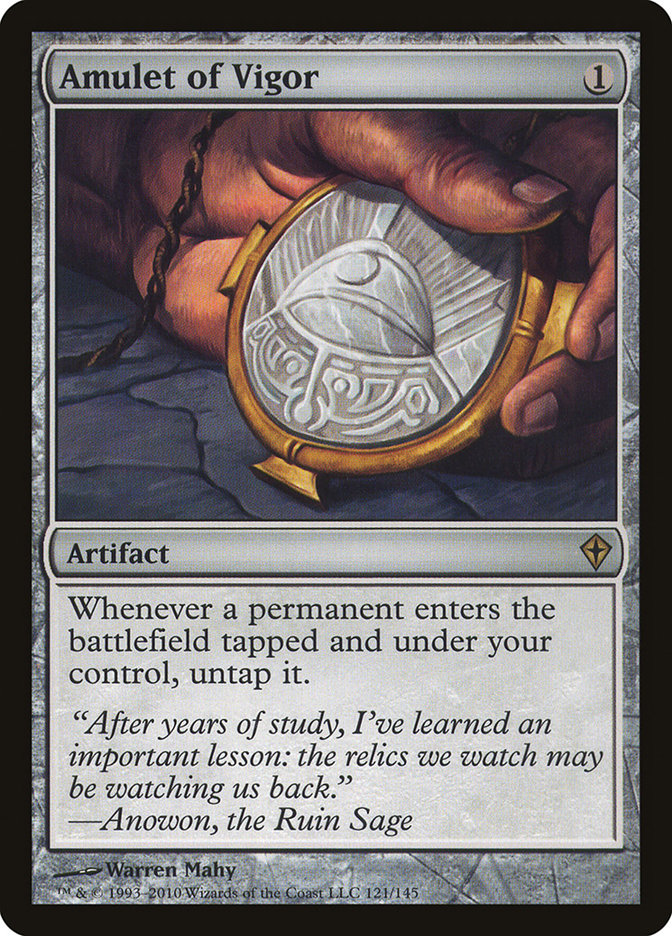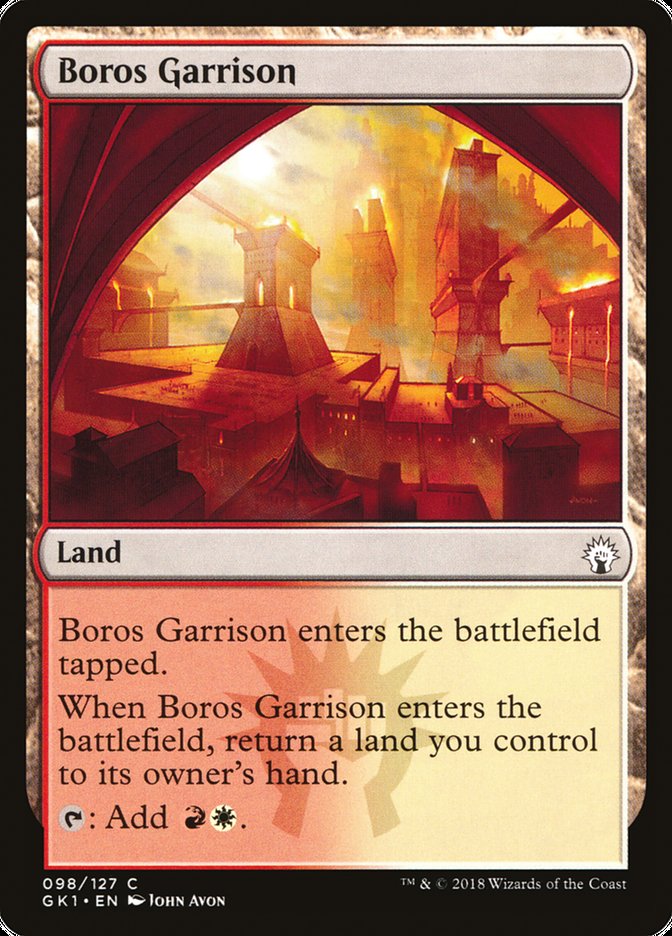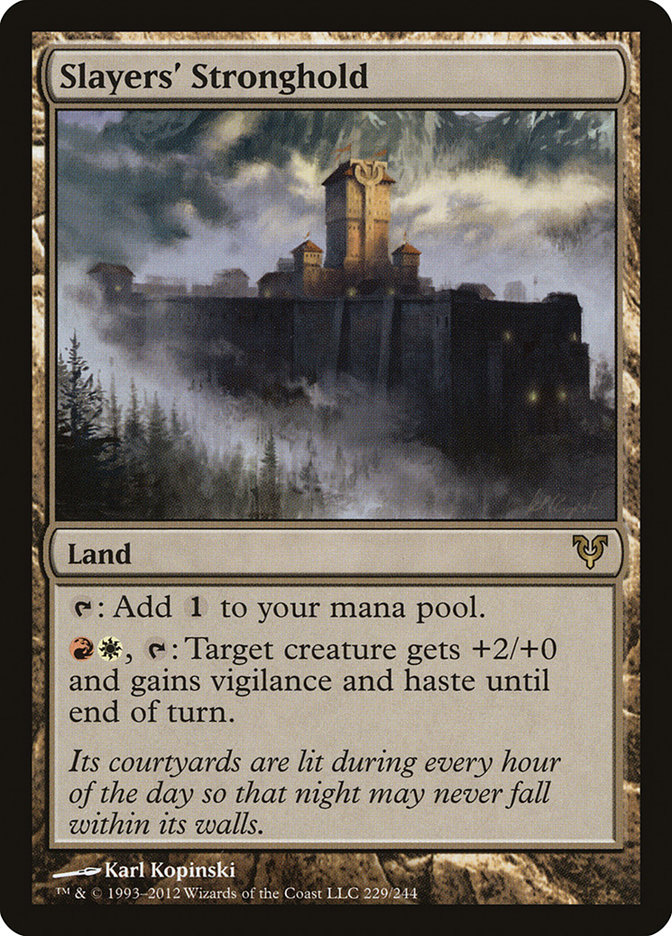There’s so much to keep up with in Magic today. Several formats and competitive circuits can make it difficult to keep up with everything that’s going on when watching the coverage of a tournament. And that doesn’t even get into the players.
Luckily, with the Season One Invitational on the horizon, there’s a great reason to get everybody caught up on what people are doing in Standard and Modern, as well as which players are going to have their most important weekends ahead of them.
Standard
Most of Standard feels as if there are two decks: the decks that are amassing planeswalkers, and the decks that are killing planeswalkers in combat. It’s unsurprising that we’re here, considering that War of the Spark had so many new planeswalkers, but as it stands, the biggest thing to look for is how much traction the planeswalker decks are able to get on the battlefield.
If a planeswalker deck is able to untap with a nonland permanent or two on the battlefield, it’s likely that it will be able to snowball some sort of advantage from there. The reason for this is because it’s similar to the same play pattern that Thief of Sanity would create.
Just like any planeswalkers, Thief of Sanity is easy enough to answer on its face. The big problem is that if its controller gets to untap with Thief of Sanity and begin accruing extra value, which means that their opponent wasn’t able to do anything to stop them in order for the game to arrive at this point.
What are the odds that the opponent is more capable of dealing with the threat now that they’re even further behind? Pretty low, right? The planeswalker decks lean into this, with the goal being to end up with two or more planeswalkers on the battlefield, in order to make it impossible to keep up with the card advantage that their engines are creating.
On the other side of things are the creature decks that are planning on answering planeswalkers in a way that doesn’t cost an entire card: attacking. Rather than giving planeswalker decks the time to set up and get their strategy going, the more aggressive strategies are pinching the slower decks in such a way that they can’t really afford to spend a bunch of time spinning their wheels.
Taking this general understanding of functionality, it’s easier to understand the plans that decks are trying to frame their specific cards around:
Creatures (8)
Planeswalkers (12)
- 4 Teferi, Hero of Dominaria
- 1 Liliana, Dreadhorde General
- 4 Teferi, Time Raveler
- 3 Narset, Parter of Veils
Lands (26)
Spells (14)

Our own Ben Friedman won Grand Prix Kansas City last weekend with this format’s most popular Teferi, Hero of Dominaria deck. The way that this deck tries to grow an advantage with planeswalkers is by reducing other resources with removal and hand destruction before recouping its own resources with planeswalker-fueled card draw.
Creatures (20)
- 4 Fanatical Firebrand
- 4 Ghitu Lavarunner
- 4 Goblin Chainwhirler
- 4 Viashino Pyromancer
- 4 Runaway Steam-Kin
Planeswalkers (2)
Lands (20)
- 20 Mountain
Spells (18)

Mono-Red Aggro has a fairly stock maindeck at this point, with the most common deviation being the fifth four-drop versus the fourth Wizard’s Lightning.
Mono-Red is using its maindeck configuration to capitalize on the fact that so many players are playing clunky, versatile cards for card advantage slogs, and simply tries to go under them. Once decks are more prepared to fight against an aggressive strategy, Mono-Red morphs into something reminiscent of the go-big iterations of the deck. This ups the card quality a bit for Mono-Red and makes it better at going toe-to-toe with decks that are going to be more able to combat the fast starts that a pile of cheap red spells can produce.
Creatures (14)
Lands (22)
Spells (24)

Izzet Phoenix is the least aggressive of the decks planning on fighting planeswalkers instead of utilizing them. The biggest reason that it doesn’t have to be aggressive but can keep up with the card advantage of Teferi and friends is largely on the back of the deck’s namesake.
It may be a waste of time at this point to describe why Arclight Phoenix is a good card, but the biggest role that it plays in this deck is it’s amazing at keeping planeswalkers in check.
The list that Andrew Ziggas succeeded at the Grand Prix with is unique in that it completely eschews both Crackling Drake and Saheeli, Sublime Artificer for God-Eternal Kefnet, but other than that, most of the pieces in this deck are to be expected from the deck.
With Arclight Phoenix being good at pressuring planeswalkers and the wall of burn spells keeping creatures in check, Izzet Phoenix ends up playing out like a control deck that can deal large sums of burst damage as the game progresses into its later stages. The longer the game goes, the more likely it is that a couple of back-to-back cantrips can equate to twelve damage in the air out of nowhere.
Creatures (22)
- 4 Llanowar Elves
- 1 Lyra Dawnbringer
- 2 Shalai, Voice of Plenty
- 4 Hydroid Krasis
- 2 Frilled Mystic
- 4 Incubation Druid
- 4 Paradise Druid
- 1 Tolsimir, Friend to Wolves
Planeswalkers (8)
Lands (26)
Spells (4)

The Simic-based Mass Manipulation / Nissa, Who Shakes the World decks are basically the pinnacle of decks that sound like they shouldn’t be real players, yet are.
In some matchups, it feels like a bit of an arms race in that it’s two players simply doing whatever they can to go over top one another. Nissa is great at pressuring planeswalkers, and Mass Manipulation is a great use of a ton of mana. Between the X-spells in the maindeck and Hydroid Krasis, these decks are built to abuse the fact that a personal mana-doubling planeswalker is a very powerful effect to have access to.
Creatures (16)
Planeswalkers (14)
- 3 Vraska, Golgari Queen
- 4 Teferi, Time Raveler
- 1 Sorin, Vengeful Bloodlord
- 4 Tamiyo, Collector of Tales
- 2 Nicol Bolas, Dragon-God
Lands (26)
Spells (4)

Command the Dreadhorde is basically the closest thing we’ve gotten to Rally the Ancestors since 2015. The goal of the deck is to trade resources on the battlefield as much as possible while preserving its life total, and then cast a huge Command the Dreadhorde. Ideally, the spell will include a Wildgrowth Walker with some explore creatures in order to juice its own life total back up and a Tamiyo, Collector of Tales to rebuy the deck’s namesake.
The deck has the format’s most powerful topdecks and is good at dragging the game out with Teferi, Time Raveler.
Creatures (22)
- 4 Llanowar Elves
- 2 Hostage Taker
- 4 Wildgrowth Walker
- 4 Merfolk Branchwalker
- 4 Jadelight Ranger
- 4 Hydroid Krasis
Planeswalkers (8)
Lands (24)
Spells (6)
Sideboard

Last weekend, one of the breakout decks was the Sultai variant of the Command the Dreadhorde deck. The biggest draw to the archetype is that it doesn’t have to deal with the semi-functional mana of its four- and five-color counterparts. On top of that, it’s better at positioning itself against the aggro strategies, as it can fairly easily just cut the Command the Dreadhorde plan and morph into a watered-down Sultai Midrange strategy.
Creatures (23)
- 4 Llanowar Elves
- 4 Rekindling Phoenix
- 4 Thorn Lieutenant
- 4 Gruul Spellbreaker
- 4 Skarrgan Hellkite
- 3 Living Twister
Planeswalkers (6)
Lands (25)
Spells (6)

Good at going over the top of Mono-Red Aggro? Check.
Good at pressuring planeswalkers during the combat step? Check.
Different variants of Gruul Midrange have been the archetype of choice for a handful of savvy players in the last couple of weeks. It doesn’t always feel clever to try to just pummel people, but the cards are individually powerful, and it doesn’t matter how smart the opponent feels if they’re at zero life.
Most of this deck is built to line up well against the offerings of the planeswalker decks and burn spells of the red decks. The card Kaya’s Wrath is naturally going to be a problem at times, but with planeswalkers being as popular as they are, Kaya’s Wrath isn’t a card that even makes it into the maindeck of a good chunk of decks in its colors.
Planeswalkers (19)
- 3 Karn, Scion of Urza
- 4 Teferi, Time Raveler
- 4 Saheeli, Sublime Artificer
- 4 Narset, Parter of Veils
- 4 Sarkhan the Masterless
Lands (25)
Spells (16)
Sideboard

The breakout deck from the last Standard Open at #SCGNY, Jeskai Superfriends is the biggest thing to blame for the direction that the format has warped in order to accommodate the likes of Teferi, Time Raveler and Narset, Parter of Veils.
Remember what I said before about planeswalker decks wanting to simply untap with whatever planeswalkers that they can? This is exactly the deck that cares the most about it. Cards like Saheeli, Sublime Artificer and Deafening Clarion are great at protecting planeswalkers, and Sarkhan the Masterless is the best in the format at turning the corner via near-depleted planeswalkers.
Creatures (16)
Planeswalkers (8)
Lands (26)
Spells (10)

Goodbye, Wilderness Reclamation.
Hello, Nissa.
It turns out that the near-infinite mana from Wilderness Reclamation isn’t as necessary as long as the Nexus deck can simply continue to untap with some of its card advantage engines on the battlefield.
Turner’s iteration of the deck is more or less shrugging its shoulders and settling up for a planeswalker-fueled midrange game in which it doesn’t need to take infinite turns. It’s perfectly happy to settle for “most of them.”
With cards like Hydroid Krasis that can attack while taking these turns, a handful of attacks will be good enough, and there aren’t as many clunky do-nothings like Root Snare in this version of the deck.
Creatures (26)
- 3 Adanto Vanguard
- 4 Skymarcher Aspirant
- 4 Snubhorn Sentry
- 4 Benalish Marshal
- 4 Dauntless Bodyguard
- 4 Venerated Loxodon
- 3 Law-Rune Enforcer
Planeswalkers (4)
Lands (20)
Spells (10)

The final piece of the “get ’em dead” plan is the Mono-White-with-sprinkles deck.
Most of the time, these decks are going to be a near-Mono-White maindeck with some other tools being splashed out of the sideboard. Eight or nine sources of the off-color will be enough to reliably cast spells by the third or fourth turn, and that’s good enough for a deck that always wants to spend its first couple of turns casting Skymarcher Aspirant, Adanto Vanguard, and Benalish Marshal.
There isn’t anything too fancy in these decks, but just like with Gruul, it doesn’t matter how fancy the opponent is planning to get if they’re at zero life.
These aren’t the only decks in Standard, but they are the biggest players to keep an eye on this weekend. A majority of things that people bring will play to similar strengths as these decks.
Modern
Modern has mostly circled back to a point at which people are doing mostly fair things. The biggest reason for this has been a surge in cards like Meddling Mage and Rest in Peace, both good at punishing different ends of the unfair spectrum. Ultimately, it’s Modern and people are just going to do what they’re comfortable doing, as there isn’t anything that’s far-and-away better than anything else.
Creatures (37)
- 4 Meddling Mage
- 4 Noble Hierarch
- 4 Phantasmal Image
- 4 Champion of the Parish
- 4 Thalia, Guardian of Thraben
- 4 Mantis Rider
- 4 Reflector Mage
- 4 Thalia's Lieutenant
- 3 Kitesail Freebooter
- 1 Militia Bugler
- 1 Deputy of Detention
Lands (19)
Spells (4)
Sideboard

Humans is roughly as good as it always was. The deck mulligans well, and even functions as a creature-fueled midrange deck most of the time. That’s to say that in any given matchup, it has two halves, and drawing the right half is going to make some games incredibly easy; drawing the wrong half is going to make some percentage of games nigh-unwinnable.
One half of the deck is for beating up on decks that it can’t go over the top of, where trying to kill them is the best thing to be doing.
The other half of the deck is for disrupting decks that are faster than it. Kitesail Freebooter and Meddling Mage tend to create precarious houses of cards, where a single creature dying will create a domino effect that makes everything die. Luckily, the fact that all the disruption of the deck has power and toughness makes it reasonable at closing the game while the opponent is still trying to get their bearings.
Creatures (9)
Lands (18)
Spells (33)

In the vein of old favorites is Izzet Phoenix. The deck isn’t really that much worse than it used to be; people just found out how to play against it and got better at respecting Thing in the Ice.
The biggest twist in these decks is that some lists have a bunch of Noxious Revivals to pair with Pyromancer Ascension. With an active Pyromancer Ascension, a couple of Noxious Revivals, and a Manamorphose, it’s possible to make near-infinite mana and draw as many cards as you want.
Other decks are going for the more traditional kill with Arclight Phoenix and Thing in the Ice. The deck doesn’t have that many different things going on, as the cantrip package takes up a ton of room and is good at making the deck hyper-redundant.
Creatures (6)
Planeswalkers (7)
Lands (24)
Spells (23)

Modern Azorius Control lists are fairly inconsistent from week to week, largely due to the fact that there are so many tools available to them on a week-to-week basis. That being said, the basic idea stays pretty close to the idea that planeswalkers equal card advantage. Trade early resources with the opponent and then bury them with Jace, the Mind Sculptor or Teferi, Hero of Dominaria.
Snapcaster Mage is the big reason that these decks can play a spread of one-ofs and it make sense, as it acts as virtual additional copies of each of these cards in the matchups that they’re relevant. Taking this into account, Opt and Path to Exile being the only four-ofs in most lists sends a pretty loud message that these are the best versions of these effects for what the deck wants to be doing.
Creatures (20)
Lands (20)
Spells (20)
Sideboard

As long as Modern is a format, there will be some Mox Opal nonsense running around. Today, Hardened Scales is the best deck at abusing the fact that Mox Opal lets it play a turn ahead of schedule by boasting the fastest goldfish kill of the Arcbound Ravager decks.
It’s pretty hard to follow all of the tricks that this deck can do with an Arcbound Ravager or a Hardened Scales, but the power cards are generally going to be Hangarback Walker and Walking Ballista. As long as those cards are able to do something meaningful in the matchup, there’s going to be a heavy emphasis placed on the roles they play.
Creatures (18)
Lands (19)
Spells (23)
- 1 Darkblast
- 4 Life from the Loam
- 2 Conflagrate
- 4 Shriekhorn
- 4 Faithless Looting
- 4 Cathartic Reunion
- 4 Creeping Chill
Sideboard

Dredge is great…as long as people forget that it’s great.
The format’s premier graveyard deck simply wants to put as many cards in its graveyard as quickly as possible, in order to put a bunch of 2/1s and 3/3s onto the battlefield. Sometimes it might even mess around and cast a couple of Life from the Loams to fuel a huge Conflagrate.
While the deck’s play patterns operate similarly to a combo deck, in reality, it’s an undercosted aggro deck that’s abusing a specific axis (the graveyard) in order to cheat on mana costs.
The big drawback to the strategy is that it is much worse when people are expecting it. Centaur Courser isn’t exactly Modern-playable, so hardcasting Prized Amalgam while the opponent has a Rest in Peace on the battlefield isn’t a reliable way of winning the game.
Creatures (7)
Planeswalkers (10)
Lands (19)
Spells (24)

The deck that got the biggest facelift from War of the Spark, as well as the upcoming London Mulligan, is the deck that everyone loves to hate: Mono-Green Tron.
The strategy behind Tron is straightforward enough:
1. Mulligan until you find a hand that will have all three of the Urza lands on the battlefield on the third turn.
2. Start casting big things.
3. ????
4. Profit.
The basics of the deck are fairly repetitive and easy to follow, but the process of getting there can shift from game to game. Karn, the Great Creator giving the deck a “Wish Sideboard” means that there are tons of options in any given turn. If it’s lucky, it can cast a Mycosynth Lattice with a Karn, the Great Creator on the battlefield and stop the opponent from tapping their lands for the rest of the game.
Ultimately, the deck is simply trying to cast the biggest colorless spells that it can find and assume that will eventually be good enough. Karn Liberated and Ulamog, the Ceaseless Hunter are just big enough to make it so this is usually true.
Creatures (13)
Lands (19)
Spells (28)
- 4 Lightning Bolt
- 4 Lava Spike
- 4 Rift Bolt
- 3 Searing Blaze
- 2 Skullcrack
- 4 Boros Charm
- 3 Light Up the Stage
- 4 Skewer the Critics
Sideboard

Tale as old as time: The Lava Spike story.
This deck needs little introduction. You play red lands and use them to cast red cards. The opponent ends up at zero life or they don’t.
Creatures (12)
Planeswalkers (4)
Lands (30)
Spells (14)

Amulet Titan is as complex as it is consistent, and let me tell you, this deck has eleven cards that have “Search your library…” written on them.
The object of this deck is to get ahead on mana with Azusa, Lost but Seeking and Sakura-Tribe Scout, and crank out Primeval Titan. Once Primeval Titan is on the battlefield, the most common line of play is to simply search up a Simic Growth Chamber and a Tolaria West. The Simic Growth Chamber bounces the Tolaria West; the Tolaria West is transmuted for a Summoner’s Pact, which grabs a Primeval Titan, and so on.
If there’s an Amulet of Vigor on the battlefield, things really heat up. Suddenly, the bouncelands are producing multiple mana the turn they enter the battlefield and it’s possible to win as early as the second turn.
With Boros Garrison and Slayers’ Stronghold, it’s possible to give Primeval Titan haste and let it immediately attack, grabbing two more lands. The possibilities from there feel endless.
Most decks are going to end up feeling similar to what one of these decks is doing: a tribal deck, a control deck, a big-mana deck, a combo deck, a graveyard deck, and so on. This is a good starting point for people who are newer to Modern and don’t wanna miss out on any of the action in the later rounds of the tournament.
Emotions will run high because this weekend, we’re going to see a group of players punch their tickets to #SCGPC.
The Players
Players have invested months of their lives, grinding the SCG Tour to qualify for the end-of-the-year event that will crown our Players’ Champion.
Other than Joe Lossett, we don’t have any players that are guaranteed to be in, but these are the players to keep your eyes on, as this weekend will make or break their Players’ Championship berth.

Abe Corrigan has been on fire this season, and it’s unsurprising to see him at the top of our leaderboard.
With an Open win, a Classic win, and three other Open Top 8s, Corrigan is pretty close to a comfortable lock for the Players’ Championship. He would need to slip down to fourth place in order to lose his invite and that’s eighteen points away.
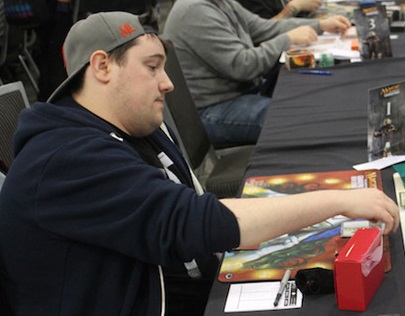
In a similar position to Corrigan is second-place Matthew Dilks. Part of the AmuLIT squad with Edgar Magalhaes and Daryl Ayers, Dilks has just been playing good Magic all season. He doesn’t have any hardware, but he more than makes up for it with consistency. With a finals appearance at Regionals and six Open Top8s, it’s no surprise that Dilks is within three points of Corrigan.
That being said, things aren’t as comfortable here. Despite being only three points behind Corrigan, he only has a single person’s worth of breathing room between a spot at the SCGPC and being on the outside looking in. Dilks doesn’t need to cover a ton of ground in order to make it to the Players’ Championship, but a total flop on the weekend could spell doom for him if a couple of players in his bracket put up strong finishes.

Now things get more interesting. There’s a ten-ish point jump between Dilks and Oliver Tomajko, our third-place player at large. With a recent one-two punch of coming in second and first at back-to-back Opens (the two-one punch?), coupled with fantastic consistency at finishing in the money throughout the season, Oliver is sitting six points ahead of Ethan Gaieski.
Tomajko doesn’t have any room to give up from his placing this weekend, so anything short of a solid finish is going to kick him out of Players’ Championship contention. Ideally, if Oliver can finish with at least eleven wins in the main event, he’ll be able to cover most of the ground between himself and Corrigan, and likely be good enough to lock himself into the Players’ Championship.
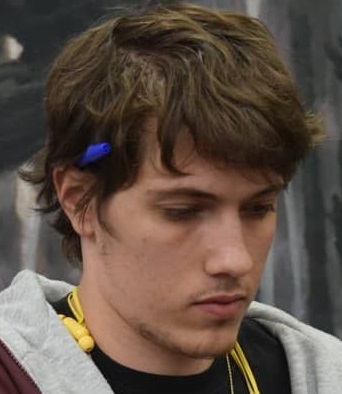
Ethan Gaieski is the start of the people who are barely outside of making it to the Players’ Championship. Being a teammate of Abe Corrigan’s during their Team Modern Open win in Columbus earlier this year and two other Open Top 8s color the upper end of his resume on the season, but his results are hardly lacking.
What Ethan needs to do this weekend is get at least 31 match points, and have Oliver Tomajko flop, in order to sneak his way into the Players’ Championship. Anything less than that is unlikely to keep him ahead of the people behind him that put up reasonable finishes and much more than that will have him in spitting distance of the upper portion of the leaderboard.
As for everyone else, Tariq Patel and Dominic Harvey started the season together with a finals appearance as Modern teammates at the aforementioned SCG Columbus and then met in the finals of the Modern SCG the following weekend. It’s fitting that they’re within a point of each other going into the final weekend of the season. Drake Sasser is a player who has not-so-quietly been putting up solid finishes every single weekend, even if he doesn’t have any hardware yet, even going as far as attending Invitational Qualifiers in order to keep himself in range of a shot at the Players’ Championship.
It’s no surprise that three players who have been consistently ahead-of-the-curve in their respective formats are this close. Any of these players could find their way in the end-of-the-year tournament if they’re able to put up a Top 16 or Top 8 finish, but anything less than that is likely going to have them a hair outside of where they’d want to finish.
Anybody much lower than these players must do something truly fantastic in order to jump their way up to the top slots. It’s theoretically possible that everybody ahead of them flops and they limp in with a Top 16 finish, but more realistically it’s going to take a Top 4 or finals appearance in order to get the points necessary to sneak into the Players’ Championship.
What’s important to note as well is that the winner of the event automatically punches their ticket to the Players’ Championship as well, and that could be anybody who qualifies and plays great Magic this weekend.
Who knows? If you qualify and play, it could even be you.


